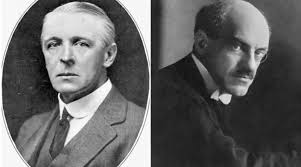The Government of India Act 1919 is also known as the Montagu-Chelmsford Reforms. It was a piece of legislation passed by the British Parliament that aimed to reform the governance structure of British India. The act was enacted in response to growing demands for greater Indian representation in government and increased autonomy for the Indian people.

The Government of India Act 1919 introduced several key reforms to the governance structure of British India. It established a dual system of government in which the British government retained control over defense and foreign affairs, while a newly established Indian Legislative Assembly was given greater control over domestic affairs. The act also created a system of dyarchy, in which certain subjects were placed under the control of Indian ministers, while others remained under the control of British administrators.
What is Diarchy?
Diarchy is a system of government in which power is divided between two sets of authorities, typically consisting of a centrally appointed executive branch and a legislature elected by the people. The term “diarchy” was first used in the context of British India during the 1920s and 1930s when the Government of India Act 1919 introduced a system of dual government, which came to be known as “dyarchy.”
Under dyarchy, certain areas of government were transferred from the British-appointed Governor and his executive council to Indian ministers who were responsible to the legislative assembly. The subjects that were transferred to Indian ministers included agriculture, education, health, and public works. The Governor retained control over subjects such as finance, law and order, and foreign affairs.
The intention behind dyarchy was to give Indians a greater role in the governance of their own country while retaining British control over the key areas of government. However, the system was criticized by Indian nationalists who argued that it did not go far enough in granting Indians full autonomy and control over their own affairs.
The Government of India Act 1935 further extended the system of dyarchy, but it was eventually abolished with the passage of the Indian Independence Act 1947, which granted India full independence and established a republican form of government.
The act also extended the system of separate electorates for different religious and ethnic communities in India including Dalits. This system, however, was criticized by many Indian leaders, who argued that it would lead to further division and fragmentation of Indian society.
Despite its flaws, the Government of India Act 1919 was a significant step towards greater Indian autonomy and representation in government. It laid the foundation for the future development of democratic institutions in India and paved the way for the eventual transfer of power from British to Indian hands.
In conclusion, the Government of India Act 1919 was a key piece of legislation in the history of British India. It introduced several reforms to the governance structure of British India, including a dual system of government and a system of dyarchy, and it laid the foundation for the eventual transfer of power from British to Indian hands. Despite its flaws, the act was a significant step towards greater Indian autonomy and representation in government, and it remains an important part of India’s political history.
Important Links